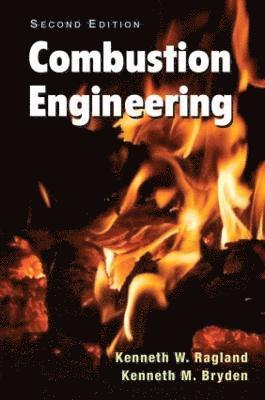
- Format
- Inbunden (Hardback)
- Språk
- Engelska
- Antal sidor
- 552
- Utgivningsdatum
- 2011-05-06
- Upplaga
- 2 ed
- Förlag
- CRC Press Inc
- Medarbetare
- Bryden, Kenneth M.
- Illustratör/Fotograf
- N, black and white 196 Illustrations A Less than 500 129 Tables black and white
- Illustrationer
- N/A; Less than 500; 129 Tables, black and white; 196 Illustrations, black and white
- Dimensioner
- 236 x 160 x 33 mm
- Vikt
- Antal komponenter
- 1
- Komponenter
- 52:B&W 6.14 x 9.21in or 234 x 156mm (Royal 8vo) Case Laminate on White w/Gloss Lam
- ISBN
- 9781420092509
- 863 g
Combustion Engineering
Kundrecensioner
Övrig information
Dr. Kenneth Ragland is an emeritus professor of mechanical engineering at the University of Wisconsin-Madison. Throughout his career, he taught courses in thermodynamics, fluid dynamics, combustion, and air pollution control. His early research was on solid fuel ram jet combustion, and gaseous and heterogeneous detonations. His research at UW-Madison focused on solid fuel combustion of coal and biomass as single particles, combustion in shallow and deep fixed beds, fluidized bed combustion, and combustion emissions. He served as chair of the Department of Mechanical Engineering from July 1995 until his retirement in July 1999. In retirement his research has focused on the development of systems for planting, harvesting, and combusting biomass crops for energy. Currently, he is the vice president of Energy Performance Systems, Inc. Dr. Kenneth "Mark" Bryden joined the faculty of the Mechanical Engineering Department at Iowa State University in 1998 after receiving his doctoral degree in mechanical engineering from the University of Wisconsin-Madison. Prior to his studies at the University of Wisconsin-Madison, he worked fourteen years in a wide range of engineering positions at Westinghouse Electric Corporation. This included eight years in power plant operations and six years in power plant engineering. More than ten of these years were spent in engineering management. Mark has an active research and teaching program in the areas of energy, combustion, and appropriate technology. He is particularly interested in biomass combustion and small cookstoves for the developing world. He is president of Engineers for Technical and Humanitarian Opportunities for Service (ETHOS) and is the program director for the Simulation, Modeling and Decision Science Program at the U.S. Department of Energy's Ames Laboratory. He teaches classes in combustion, sustainability, energy systems, and design for the developing world. He is the recipient of numerous teaching and research awards, including three R&D 100 awards within the past five years.
Innehållsförteckning
Introduction to Combustion Engineering Section I: Basic Concepts Fuels. Thermodynamics of Combustion. Chemical Kinetics of Combustion. Section II: Combustion of Gaseous and Vaporized Fuels Flames. Gas-Fired Furnaces and Boilers. Premixed-Charge Engine Combustion. Detonation of Gaseous Mixtures. Section III: Combustion of Liquid Fuels Spray Formation and Droplet Behavior. Oil-Fired Furnace Combustion. Gas Turbine Spray Combustion. Diesel Engine Combustion. Detonation of Liquid and Gaseous Mixtures. Section IV: Combustion of Solid Fuels Solid Fuel Combustion Mechanisms. Fixed Bed Combustion. Suspension Burning. Fluidized Bed Combustion. Appendices Properties of Fuels. Properties of Air. Thermodynamic Properties of Combustion Products. Historical Perspective on Combustion Technology.
Du kanske gillar
-
Orbital
Samantha Harvey
Häftad
